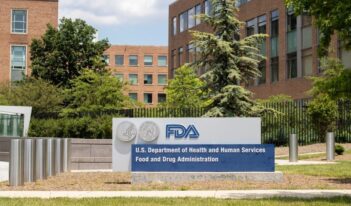
Agency hopes a strategic plan and proposed rule will protect patients from delayed treatment.
Over 200 drugs are currently unavailable in adequate amounts in the United States, according to the American Society of Health-System Pharmacists. Many patients in need of certain oncology drugs, antibiotics, anesthetics, and nutrition supplements have recently suffered from a lack of supply. The American Society of Clinical Oncology reportedly said that shortages of electrolyte solutions and intravenous drugs are “alarmingly” high and harm cancer care in the United States. Given that almost half of all people in the United States take at least one prescription medication a month, the drug shortages could potentially affect a large patient population.
Prompted by a 2012 statute, last month the Food and Drug Administration (FDA) released a strategic plan and a proposed rule to combat drug shortages.
The proposed rule and strategic plan build on the FDA’s efforts to combat drug shortages under President Obama’s 2011 Executive Order on the issue. Just six months after the Executive Order, the FDA received six times more voluntary shortage notifications from drug manufacturers than before, facilitating agency efforts to cut the number of new shortages by more than half between 2011 and 2012. FDA officials reportedly said that only two years ago,due to communication failures with drug manufacturers, the agency would often not learn of drug shortages until products failed to make it onto store shelves.
The proposed rule, currently in its sixty day comment period, requires pharmaceutical and biologic product manufacturers to notify the FDA six months in advance of actions that may disrupt the supply of certain drugs or biologic products, such as plans to discontinue production or put the usual output of a product on hold. Biologic products include sterile injectable drugs—products composed of sugars, protein, or nucleic acids that are derived from living microorganisms and are often involved in blood transfusions.
By receiving earlier notifications of possible shortages, the FDA should be better prepared to avoid a lack of supply of important medical treatments. Shortages can be detrimental for patient care. With advanced notice, the FDA can assist manufacturers investigate the cause of the production disruption and aid efforts to avoid possible shortages. The FDA could also, if necessary, approach alternative manufacturers to produce the drugs or expedite reviews and approvals of identical or similar drugs submitted by alternative manufacturers .
Under the proposed regulation, drug manufacturers that fail to adhere to the notice requirements would receive a public noncompliance letter posted on the FDA’s website.
In addition to delays, shortages of drugs or biologic products can result in denial of patient care, particularly if doctors and hospitals lack adequate time to consider alternatives. Furthermore, using alternative treatments due to a drug shortage may involve more than just swapping out one drug for another. Alternative treatments may also require that doctors or hospital staff receive training to administer a new product, and that hospitals may have to update their systems and ordering processes to accommodate a change. Advance notice from manufacturers about shortages would thus improve healthcare providers’ ability to adapt to disruptions.
In addition to the proposed regulation, the FDA’s strategic plan describes ways the agency intends to improve its responses to notifications of potential shortages. The plan includes communication improvements, such as an initiative to create a smart phone app with up-to-date shortage information, as well as major improvements to the FDA website.
The mobile app would allow healthcare systems to access information such as how long the government expects a shortage to last and what alternatives are available. The FDA also plans to improve its drug shortages website to include therapeutic categories, enabling health care providers to easily access only the medical areas relevant to their practices.
To address common underlying causes of drug shortages, the strategic plan also includes proposed actions focusing on manufacturing quality. The majority of drug production shutdowns stem from either a lack of raw materials or quality issues such as contamination by foreign particles like fungi and bacteria.
The plan calls for incentives for high-quality manufacturing by pharmaceutical companies, the creation of an Office of Pharmaceutical Quality, and strategies to identify early indicators of problems with a certain product’s quality that may result in a shortage.
While the FDA is aware that creating financial incentives could drive full industry cooperation, the agency’s resources are limited. Thus, in its strategic plan, the FDA calls on extra-agency stakeholders to develop financial or economic incentives to improve the quality of drug production. For the time being, it may be more feasible for the FDA simply to publicly acknowledge those companies the high quality manufacturing standards espoused in the agency’s proposal.



